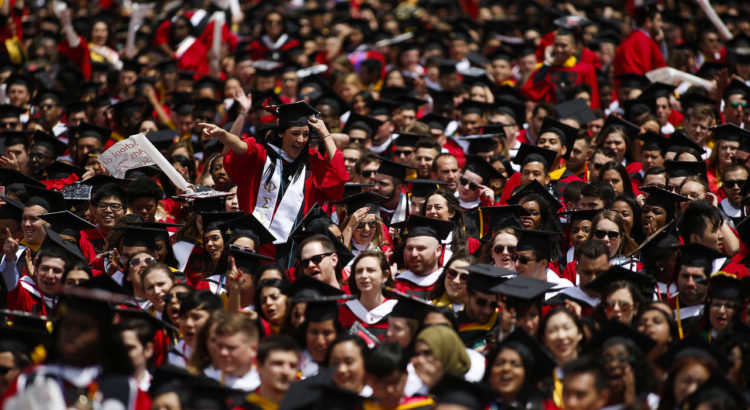Africa/31 de Julio de 2016/Autor: Imogen Mathers/Fuente: All Africa
RESUMEN: Los últimos 18 meses han sido turbulentos para muchas universidades de todo el continente africano. De Ciudad del Cabo a Ibadan a Nairobi, los campus se han convertido en sitios de protesta y debate acerca de las tarifas, la igualdad de acceso a la educación, el carácter colonial de los planes de estudios, la desigualdad social, y muchos otros temas. El centro de atención ha sido la cuestión de cómo hacer la educación accesible a millones de jóvenes estudiantes, en un continente con el más rápido crecimiento de la población juvenil en el mundo. Al mismo tiempo, las universidades e institutos de investigación de África tienen el mandato de producir una investigación independiente, socialmente relevante dentro de un sector de la educación superior en forma global cada vez más por la privatización, la competencia, la comercialización de la investigación académica y la inseguridad laboral. La cuestión de cómo garantizar el acceso de estudiantes a la educación e invertir en investigación, en un contexto de estancamiento económico, el aumento de los costos de vida, y la amenaza de recesión mundial, es una controvertida.
The past 18 months have been turbulent for many universities across the African continent. From Cape Town to Ibadan to Nairobi, campuses have become sites of protest and debate about fees, equal access to education, the colonial character of curriculums, social inequality, and many other issues.
Under the spotlight has been the question of how to make education accessible to millions of young students, in a continent with the fastest growing youth population in the world. At the same time, Africa’s universities and research institutes are mandated to produce independent, socially relevant research within a global higher education sector increasingly shaped by privatisation, competition, the commercialisation of research and academic job insecurity. The question of how to ensure student access to education and invest in research, against a backdrop of economic stagnation, rising living costs, and the threat of global recession, is a vexed one.
Today, SciDev.Net is holding an online debate to discuss these issues with academics, students and education specialists from across Africa and its diaspora. In this feature, we set out some of the main issues and what to do about them.
What are the challenges?
Universities face myriad funding problems. In a continent of 54 countries, with different economic policies, political structures and histories, it’s obviously problematic to generalise. But there are some features more widely found.
Often, the histories of universities have loosely mirrored those of the state: the university as site of anticolonial struggle; the idealism and intellectual exuberance of the post-independence years; the growing poverty and damage of 1970s and 1980s structural adjustment policies; and the lingering effect of underinvestment and neglect.
Many universities are still reeling from the effects of the policies imposed by the World Bank and International Monetary Fund from the 1970s in return for loans. These institutions framed Africa’s universities not as the backbone of development, but as a misuse of resources. [1] Money for education was channelled away from universities and into primary and secondary schools. «To this day, many countries have not been able to recover from that onslaught on African higher education,» wrote Ann Therese Ndong-Jatta in 2002, when she was Gambia’s education minister. [1]
Underinvestment in infrastructure, staff salaries that have failed to keep pace with inflation and living costs, and inadequate research funding have poleaxed many universities. Universities that were once beacons of intellectual vigour and research excellence are struggling. Faced with economic stagnation and poor tax revenues, many governments claim their tax base is too small to prop up a free higher education system, while their critics argue that corruption and bulging public sector salaries must be rapidly reined in and the money raised directed towards education.
All this means that in many places, the dream of free higher education is fading fast. Rather than improving accessibility, education is instead growing increasingly elitist.
Students in the firing line
For students, the situation can be dire. In South Africa, the average annual cost of fees and board exceeds the average household income. While the poorest students are supposed to get government assistance, «there are a group of people caught in between» who neither qualify for assistance nor can afford to pay fees, explains Lesley Le Grange, higher education professor at Stellenbosch University. This means universities not only perpetuate, but also actively widen South Africa’s social inequalities, say both Le Grange and Kealeboga Mase Ramaru of campaigning organisation Equal Education.
For those students who do get in, university can involve a struggle to balance studying with paying the bills. Underinvestment in labs, teaching and basic infrastructure also undermines learning. Poor salaries among staff mean strikes are frequent in many African countries, which can extend the time it takes to complete a degree by years. And then many graduates who can afford to leave do so, worsening Africa’s infamous ‘brain drain’ problem.
Things can be particularly acute for female students. In many countries, female students find it harder than men to gain access to university, or can encounter serious issues once there, from teaching methods that favour men, to sexism, discrimination and rape.
Staff struggles
For staff, academic careers are increasingly becoming the preserve of those who can afford them. Salaries can fail to match rising living costs. Many in the state tertiary sector now top up low salaries with consultancy fees or jobs at the many private colleges proliferating in countries such as Uganda.
Academics often find themselves struggling to meet the demands of unreasonable teaching loads, including vast undergraduate classes, unwieldy responsibilities for PhD supervision and enormous amounts of administration. This can harm research, says Goolam Mohamedbhai, former secretary-general of the Association of African Universities.
Impact on research
Heavy work burdens and underinvestment in research also starves many African countries of the knowledge they need to meet certain twenty-first century challenges.
On paper, the continent’s 54 countries have noble research goals. Spurred on by the African Union, many governments have said they intend to spend one per cent of GDP (gross domestic product) on research, as laid out in the Lagos Plan of 1980 and reaffirmed in the Science, technology and innovation strategy for Africa. This ambitious strategy aims to put science «at the epicentre of Africa’s socio-economic development».
But few countries look close to meeting this target, and the strategy has been criticised for failing to match rhetoric with action or to commit governments to spending targets. Furthermore, funding and research policy experts decry the lack of efficiency in grant management systems – one they say hampers science across the continent.
Clearly something has to change if African countries are to fund the kind of research they need. The Ebola crisis in West Africa is just one example of a poor research landscape preventing local researchers from taking the lead on vaccine research or the public health response.
Education is also considered a buffer against extremism – both because it can bring jobs and because it opens students to the value of cultural diversity and bridges divides in an increasingly fractured world, and a continent plagued by militant groups from Boko Haram in Nigeria and Chad to Al-Shabaab in Kenya and Somalia.
Other challenges include the growing pressure neoliberalism places on universities. Universities are increasingly expected to compete with each other for students, monetise research and audit research outputs, within a highly competitive, global higher education sector. The growing power of league tables to compare and rate universities, not just on research but also on other assessments such as ‘student experience’, adds to the pressure.
What are the solutions?
Many of those in government and university management claim that introducing fees is now the best way to fund universities. But others argue that fees will always be inadequate and that a diversified funding structure is required.
Beyond fees, there are many examples of universities cutting costs while ensuring quality research. Collaboration is one option. In Ghana, the Kwame Nkrumah University of Science and Technology has opened a US$6.5 million ‘superlab’ that is available for use by students across West Africa. The idea is to reduce costs by sharing equipment.
Cross-disciplinarity is another route. This aims to bring together different disciplines and sectors to tackle the complex, intertwined challenges of modern life. But it can have economic benefits too. Rather than duplicating research in different labs and departments, academics can pool resources and streamline research.
Another route includes South-South partnerships, or North-South partnerships. The latter have underpinned scientific research in Africa for decades. But here again the charge of postcolonial legacies and unequal power balances are hard to shake off. African researchers complain of being treated as secondary partners, the poor cousins to the wealthy research institutes of the North. Others complain Africa is seen as a ‘petri dish’ where Northern scientists test out new ideas.
These criticisms also extend to the many aid programmes focused on higher education partnerships. Many are of value, from the British Council’s long history of investing in education, to the new SPHEIR programme launched by the UK Department for International Development and partners. But these also need interrogation. What model of higher education are rich nations exporting? Where does power reside and who designs courses and management structures? How are privatised models for education reshaping universities across the world?
Centres of excellence
Academics across Africa and its diaspora often advocate turning certain institutions into centres of excellence for particular science and innovation subjects, rather than spreading resources thinly across many universities. For example, Calestous Juma debates the merits of innovation universities, a new kind of institute that combines research, teaching, community service and commercialisation.
Digital futures
Digital technology also offers rich opportunities for delivering better education at a fraction of the cost of conventional teaching. The internet and mobile tech can link academics, students and staff as never before, building pan-African networks, while also bringing education to those in volatile or war-torn regions. One example is online training programmes for Somali medics. Digital tech enables MOOCs (massive open online courses), distance learning and blended courses that combine classroom and online learning. Tunisian digital education expert Houda Bouslama describes this as a powerful force for change in Tunisia: through information and communications technologies, universities can support far more students, far more cheaply.
Growing university-industry links
The call for closer links between industry and universities is getting louder. Higher education specialist Beatrice Muganda argues that universities need to position themselves far more clearly as part and parcel of the societies they supposedly serve, and to nurture research landscapes where innovations can thrive and reap dividends for universities. Ghanaian-British politician Paul Boateng says that intellectual property systems must drastically improve if African countries are ever to become knowledge economies – a view echoed by Nigerian intellectual property specialist Umar Bindir among others.
There is also a growing call for universities to team up with local innovation sectors, such as the tech hubs flourishing in towns and cities across the continent. Technology businesswoman Mariéme Jamme has long campaigned for better regulatory frameworks and government investment to help pioneering African technologists and coders turn creative projects into viable, sustainable businesses.
Many also call for closer links between African universities and big business. Mauritian President Ameenah Gurib-Fakim argues that African universities must work more closely with industry – whether local businesses or multinationals – and that this should include industry directly funding courses.
This obviously poses a risk. Industry-sponsored PhDs for specific research outcomes are one thing, but what happens when industry funds an institute: what might the compromises be then? UCT engineering student, activist and writer Brian Kamanzi says «one of the hugest battles that we have is to protect our public institutions from interference» from industry, particularly when so many businesses in South Africa, as in other African countries, are foreign owned or controlled.
Meanwhile many other avenues for funding higher education in Africa are opening up – not least the growth of Chinese investment in the continent’s universities.
Taxing the wealthy
The small tax base of many African countries is often held up as a reason why governments can’t invest enough in education and in other services. «Someone has to pay,» says Le Grange. «But we have a responsibility to students who are unable to afford higher education, but have the ability to study and perform.» One route to bridging the impasse is a wealth tax, he says. «I think a lot of people would agree to that as long as that money is ring-fenced and channelled to higher education, because people are concerned about corruption within the government.»
Others suggest a graduate tax could be the best way forward, while still others say the tax base is already overburdened, and that the focus instead should be on higher corporation tax, reining in corruption and reducing the salaries of senior ministers.
The future
Worldwide, the higher education sector is undergoing radical change. Globalisation and privatisation are reshaping universities, while mechanisation and the internet are altering industry and employment in ways that we are only just beginning to grasp. While access to university in Africa and across the world remains beset by challenges, having a degree no longer guarantees work.
In a continent where over 200 million people are under 24 years old, wider changes are needed to provide jobs. Shaking up how universities are funded, and laying the foundations for a more robust public and higher education funding landscape, are good steps to making universities accessible and sustainable. But there are enormous challenges ahead.
These need scrutiny and debate – something we hope today’s online discussion, from 1-3pm BST (GMT+1) will provide. Do join us.
References
[1] Joel Samoff and Bidemi Carrol Conditions, coalitions, and influence: the World Bank and higher education in Africa (Annual Conference of the Comparative and International Education Society Salt Lake City, 7 February 2004)
Fuente: http://allafrica.com/stories/201607300146.html
Fuente de la imagen: http://blogs.elpais.com/africa-no-es-un-pais/2013/08/volver.html











 Users Today : 72
Users Today : 72 Total Users : 35403410
Total Users : 35403410 Views Today : 85
Views Today : 85 Total views : 3332711
Total views : 3332711